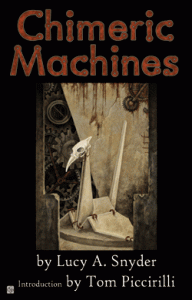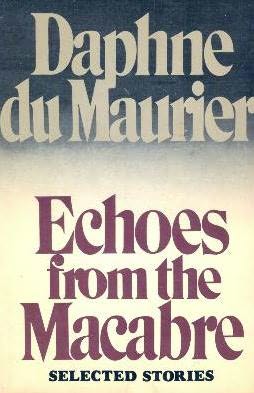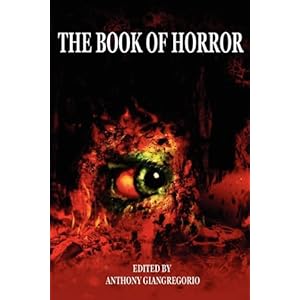
Editorial April 2010 issue 10
Nickolas Cook
Editor-In-Chief
The Black Glove Magazine
Warning:
This month’s editorial is going to be more along the lines of a rant, and for that, I apologize. But if you’re over the age of 30 (or, hell, maybe even 25), you’ll probably understand why I felt the need to go ‘postal’.
And it's long one, too. See, I didn't write one last month, and now, well, I've got some stuff to say.
You see, I guess I’m becoming one of those old bastards that I used to dread being around (usually in an enforced situation, such as a classroom in college or at work) when I was a younger man.
Yes, I’ve become the dread North American Male Curmudgeon.
More specifically, the North American Male Horror Curmudgeon.
You’ll know the N.A. Male Horror Curmudgeon by his distinctive markings: he’s usually seen at horror conventions wearing a faded (and sometimes even torn) black horror movie t-shirt. Most times it’s The Evil Dead, Return of the Living Dead, maybe even a “I Survived A Summer At Camp Crystal Lake Blood!”. And his hair is usually too long, too unkempt, or just too gone—possibly all three.
We, dear friends, are a proud species of horror fan. For, you see, we lived through the heyday of the horror industry, from the late 70s, through the 80s, and up to the early 90s. It was about a fifteen years period in which horror at the box office, and on the bookshelves, even on the television screen, was king!
But we’ve become a cynical bunch, indeed.
Or at least I sure as hell have.
And in large part that’s due to what Hollywood’s doing to utterly pigfuck my beloved horror heritage.
Thanks in large part to this asshole...

I swear, if there were such a thing as a petition to send a bill to congress to keep more idiot producers from making more idiot remakes I’d sign it in a heartbeat. Anything to make them stop raping the studio vaults for classics (and some not so classics) to ‘re-imagine’.
You know, I just love that made up word…’re-imagine’.
Nothing absolves a producer/director/actor quite so conveniently when the movie totally bombs, and pisses off the fans, as saying it wasn’t a ‘remake’, it was a ‘re-imagining’, and that we didn’t get it. And what a lousy bunch of ingrates we are. We should feel so lucky that any self-respecting studio even makes this drivel and blah…blah…blah.
But Hollywood, and its seemingly psychotic need to shit on the classics, is only part of the problem. The other thing that’s pissed off a lot of us horror curmudgeons is the lower end of the horror fan base. I’m talking about the under 25 crowd of supposed horror fans. You know the ones I mean.
The darker-than-dark folks who never even knew there was an original “Texas Chainsaw Massacre” that changed the horror world forever, that there’s an original “Halloween” that created its own sub-genre of horror films--a sub-genre that has had such a huge social and cultural impact on our country that there are college courses devoted to it and its hundreds of ripoffs.
These Horr-peas, if you will, have grown up on a steady diet of diluted PG-13, UPN-, FOX-, WB-starring crapfests that they’re convinced is real horror film-making at its best.

Now maybe some of you don’t move in social circles where you find yourself interacting with these Horr-peas, but in my profession for the last ten years or so, I’ve been in a business where I keep getting older and the people around me stay the same age, if you get my meaning. It’s sort of like Matthew McConaughey’s character is Dazed and Confused (1993), David Wooderson.
Invariably, our conversations come around to horror books and movies (if you’ve ever met me face to face, you’ll know why) and these conversations usually go one of two ways: If the person is NOT a horror fan, we move onto more neutral topics of discussion-i.e., dogs, cats, food, that funny smell in the parking lot.
But if the person has convinced himself (or herself, in many cases) that he’s a true-blue horror fan, we talk horror.
In less than five minutes I can usually nose out whether this person is a ‘horrorhead’ or merely a Horr-pea, by the mention of a few key movie titles. “I Know What You Did Last Summer” is one, the “Halloween” remake (which will forever be known as “Rob Zombie’s Halloween” because he’s a twat) is another, the “Prom Night” remake, the “My Bloody Valentine” remake (didn’t matter that it was in 3-D, by the way; it just meant a shitty movie was thrown at you, instead of merely playing its shitty way across the flat screen), “The Grudge” remake, and so on and so forth. I think you get what I’m trying to say here, right?
If you’re caught in a conversation trap with one of these bright-eyed 20 year-olds and he or she mentions any or all of the above titles as being A) scary, B) really awesome or C) the best film of “ENTER YEAR HERE”, then you, friend, are talking to a Horr-pea.

Granted, it’s a shit thing to happen.
But don’t worry, because I’m going to tell you how to deal with it.
First of all, and let me make this very clear, do NOT feign enthusiasm for these god awful movies for politeness’ sake. It will only encourage them to yammer on mindlessly about their fucking sequels. And if there’s anything worse than the original ‘re-imaginings’, it’s the shit-for-brains ‘re-sequels’. Apparently the theory behind said sequels is to make the same fucking movie again, with even less money, and even less respect and imagination than the first one.
Second, don’t bother trying to educate a Horr-pea on the existence of the originals. As far as these assholes are concerned, the world didn’t actually exist before their illustrious births, and we’re all just ‘re-imaginings’ of real people, without histories or memories. Their cultural reference point demarcates backwards at around five years from the point at which you are having this inane conversation from Hell. They do NOT care about your having seen the original “Dawn of the Dead” when it meant something to the world of horror.
Third, do NOT even bother wasting your time talking horror literature with them. Trust me, if they can’t be bothered to educate themselves on the history of horror film, they sure as fuck aren’t reading anything other than their cell phone texts messages.
So what can a horror curmudgeon do in a world where it seems there are now more Horr-peas than horrorheads (Twilight fans…yeah, I’m talking about you)?
Well, you can do what me and my wife do to combat this general dilution of the horror world. We have quarterly all-night horror moviethons called Scream-O-Ramas. Which we 'borrowed' and 're-imagined' from an excellent local arthouse movie theater here in Tucson, called The Loft. We attend their annual Scream-A-Rama every year.

Like theirs, we do a night long event, in which we play classics from the 30s, 40s, 50s, 60s, 70s, 80s, occasionally something from the 90s, but rarely anything new. We’re about the classics, not ‘re-imaginings’, after all, so remakes hardly ever make the shortlist.
We own close to 3,000 movies at the time of this writing, and the collection is growing each year, so, for us, a totally original Scream-O-Rama is easy enough to pull off. It’s almost a guarantee that the movies we play will be first time viewings for even our horror fan friends. But you certainly don’t need to own thousands of movies to pull off your own Scream-O-Rama night with some friends. Not with the technology available these days, with Netflix, On-Demand, and now you can even instantly download movies via your Playstation and X-Box game systems. And I’ve seen the movie lists for these options and they’re pretty extensive, so you should have no problem finding something for everyone.
We make our Scream-O-Ramas real events, by sending out ballots from which to select what you want to see in each category, then we tabulate the votes and send out another email to everyone with the titles we’ll be watching on Scream-O-Rama night. Everyone brings their favorite movie snacks and drinks and we have a great time.
If more people did this, it might send a very clear message to Hollywood studios that we don’t want anymore ‘re-imaginings’.
(Although I’m well aware of what’s driving them to make these shitty remakes/re-imaginings. See, they own the rights to these movies already, which means they don’t have to pay for original material, and they can basically do whatever the hell they want with them. This glut we’re seeing is really nothing more than a corporate minded bottom line decision—purely a fiscal decision, and not a creative endeavor in the least. In other words, it’s the money men telling you that you’ll get what they want to give you and like it, chump.)
And what about the future of the Horr-pea? What will become of them?
Well, my guess is the little bastards will one day be sitting right where I am, angrily expounding on the importance and social impact of such ‘horror epics’ as the “Black Christmas” remake, the ‘re-imagining’ of “Friday the 13th” and why “Rob Zombie’s H2” re-sequel was the best movie of his career.
Yeah, I’m old enough to know that it all comes around, sooner or later.
But that doesn’t make it any easier to watch my horror heritage, the horror world that’s kept me happy and sane for going on 41 years now, being screwed over for a buck by small minded, short sighted assholes, with more money than taste. I hate seeing the cultural and intellectual bankruptcy that’s being played out in my country because of a lack of imagination and honesty in entertainment.
American horror, and the new class of Horr-pea fans, is now a lackluster, homogeneous and utterly safe cinema. There can be no sense of danger in a movie-making industry that’s more worried about satisfying advertisers, middle-American morals, and fucking corporate bank accounts than striving to create something new and over-the-top dangerous for future horror fans. There’s no fear in a PG-13 horror film, except maybe for the 10 year-olds who sneak in to watch such drivel. And it is my opinion that there are no great American horror movies being made.
Not today.
And maybe, my friends, not forever, if the bank accounts and the moral majority have their way with us.
It's heading steadily towards that final scene in Fulci's greatest existential horror film, THE BEYOND (1981), where the last two people in the movie are staggering blindly through a deathly wasteland.

Yeah, that's what the horrorheads have to look forward to in the country that practically invented the best in horror cinema.
Okay, rant over, folks.
True horrorheads, you can go back to watching “Terror Train” and loving Jamie Lee Curtis, even in that ridiculous film.
And Horr-peas, I’m sure there’s a Buffy rerun you can watch, isn’t there? Or maybe you can go fawn over your dreamy Twilight posters. In any case, I’m sure you can easily forget everything this old North American Male Horror Curmudgeon just said.
--Nickolas Cook
Editor-In-Chief
The Black Glove Magazine











































.jpg)

